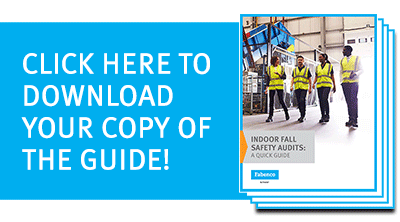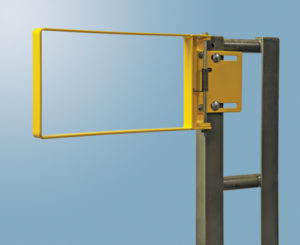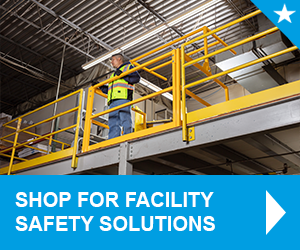
Maintaining workplace safety is likely one of your top priorities, and not just because it’s mandated by federal and state regulations. It also improves morale, and believe it or not, productivity. Unfortunately, we’re all susceptible to habit and routine. It’s easy to become complacent in the activities we participate in day after day, especially when it comes to being safe. Unfortunately, that kind of complacency can become a slippery slope when it comes to workplace safety — no pun intended.
How Does Complacency Happen?
When work routines become familiar, it’s easy to take systems for granted and become relaxed in your environment. Some employees might begin to feel their skills and experience are enough to keep them from having a slipup and casually cut corners on safety protocols to increase their productivity. It’s also possible that they can work this way for a long while without incident. Add an unblemished track record and it’s easy to become overconfident.
Unfortunately, this confidence only heightens their false sense of security. At any given time, something can happen out of the ordinary — a slippery surface, an unclosed stairway safety gate, or other human error can lead to injury, bring production to a screeching halt, and cause a mountain of fees and citations. None of which are good for your company’s bottom line.
How to Fight Workplace Safety Complacency
The good news is complacency is fairly easy to course correct. Take a look at these actionable solutions to help keep you and your team on your toes.
Create a Safety-First Culture
Workplace safety begins at the very top. Company leadership should put a high priority on safety and set an example for the rest of the organization by:
- Using proper safety equipment like industrial guardrails or a self closing gate to protect leading edges.
- Encourage employees to work together to ensure everyone follows safety procedures.
- Make a safe workplace a priority for everyone by rewarding safety-minded workers.
- Act swiftly to correct potential safety red flags before they become an issue.
Keep Safety Front of Mind
Often your employees are focused on the task at hand, which is precisely how you want them to be. But it’s easy to forget about safety when your concentrating on getting the job done. Keep safety top of mind by stressing the importance of safety procedures and fall protection systems through:
- Regular meetings with team members to discuss safety issues.
- Keeping high-contrast warning signs and safety procedures posted throughout the facility.
- Evaluating employee safety performance throughout the year.
- Ongoing safety training for both new hires and long-term employees.
Provide Adequate Safety Equipment
Talking about safety with employees is only a part of the equation. You also must make sure everyone has the right fall protection systems in place, no matter what their work environment entails. Employees need to be trained on how, when, and why to use each system — even intuitive systems like a self closing gate may require training. Here’s an example of the kind of safety equipment you should consider:
- A stairway safety gate that protects workers from accessing hazardous areas or slippery staircases.
- A self closing gate at the entrance to a dangerous work area or near heavy equipment.
- Swing gates and mezzanine gates that keep workers, debris, or equipment from falling over an edge
- Passive fall systems like safety railings or guardrails installed around any area where there’s a risk of falling.
- Personal fall arrest and fall protection devices where applicable.
Pay Attention to the Details
Policies, expectations, and training only go so far when it comes to fighting workplace safety complacency. To develop a strong safety culture in your organization, everyone in your company hierarchy needs to take it seriously. Here’s how:
- Keep facility floors clean and free of debris and other tripping hazards.
- Remove tools, debris, and other obstacles from stairways, walkways and raised platforms.
- Properly clean and maintain equipment and machinery to keep it in top working order.
- Perform daily inspections of the facility, individual work areas, storage areas, and around machinery.
Encourage Employee Input
If a safety procedure is too complicated, ineffective, or disruptive it can hurt your employees more than it helps. Your people know what they need to do, and how best to do it. Involving them the process of designing safety policies makes sense. Since they’re the ones who are dealing directly with the hazards they should have some input into how things are done. Their ideas and suggestions should be given heavy consideration — after all, they are the ones on the frontlines.
- Give employees choices. For example, would a self closing gate or a manual swing gate be a better option?
- Ask their opinion. Would a stairway safety gate or a portable guardrail solve their safety problem?
- Involve them in decision-making. For instance, which fall protection systems are best and why?
- Hold employees accountable for themselves and others to ensure everyone stays safe all the time.
- Be approachable and take safety complaints seriously. If something isn’t safe, employees should feel comfortable approaching management — and not expect to be reprimanded.
Conclusion
You already know it’s a legal obligation to provide a safe environment for your employees. You do everything you can to meet federal and state-mandated safety regulations and provide your workers with adequate safety equipment. But even when you’re doing the right things, it’s easy for people to get complacent, letting safety standards slip.
Encouraging a safety-first company culture, training employees, providing proper safety equipment, and keeping the lines of communication open are the best ways to fight complacency. Remember, safety begins at the top. Leading by example, rewarding safe behaviors, and quickly addressing unsafe attitudes or behaviors is a must. By eliminating complacency, your facility will be safer, more efficient, and more productive. That’s something every organization can get behind.









